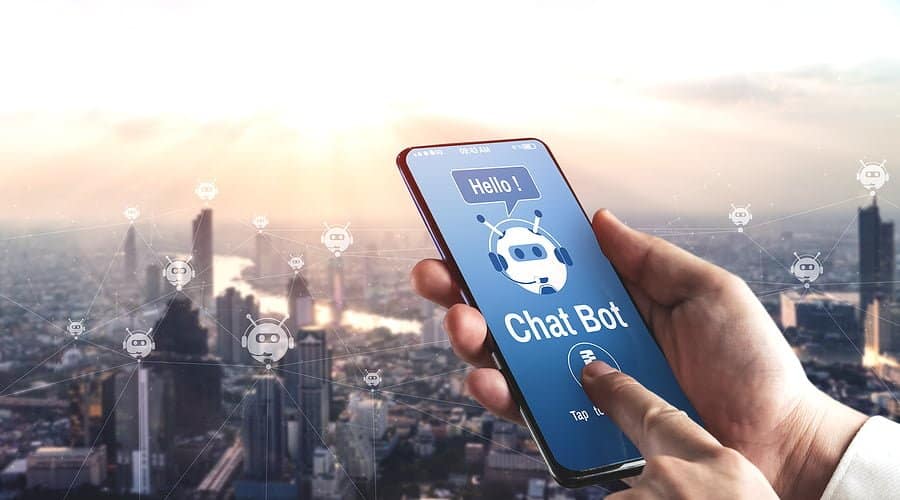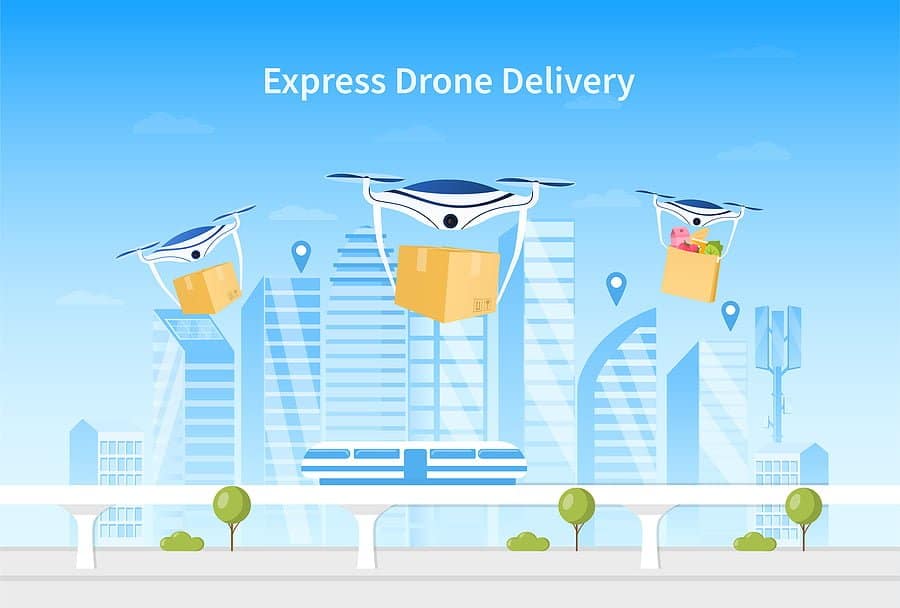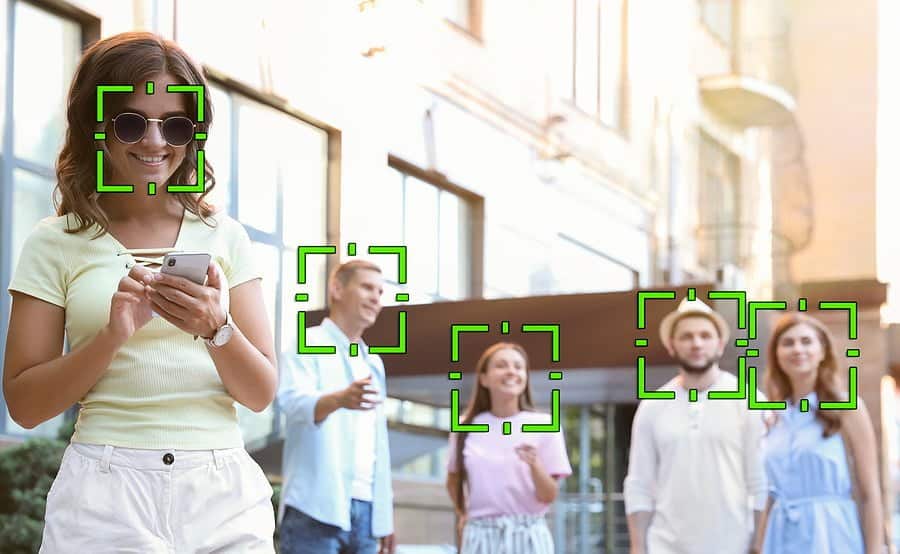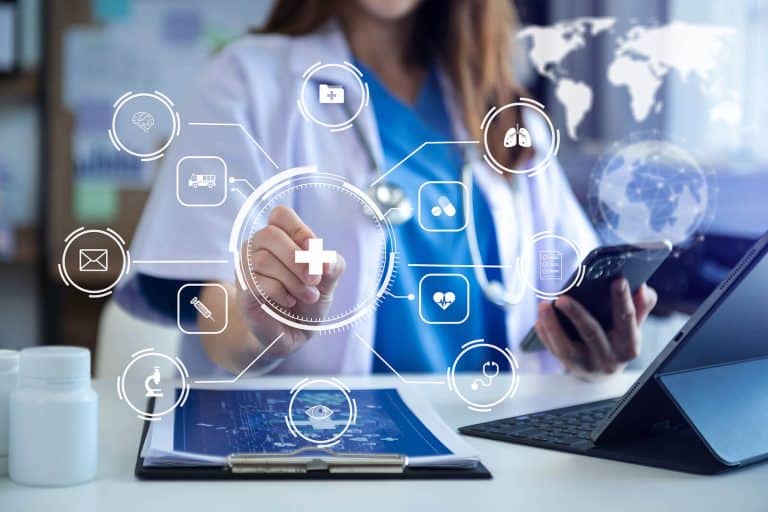Healthcare Technology – needed now, more than ever.
Table of Contents
ToggleA Pandemic as severe as COVID-19 requires immediate action. Not just on humanitarian grounds, but also accelerating healthcare delivery. Technology is at the forefront of limiting the outbreak, as well as fighting the pandemic.
Whether it is Artificial Intelligence (AI), telehealth, mobile app development, cloud, or more, IT healthcare solutions are being used in different ways to control the outbreak significantly. It has become possible to test innovative approaches to the pandemic response.
One of the biggest challenges is controlling misinformation about the number of fatalities, diagnosis, treatment options, and vaccine development. This has not been helped by government advisories that can be confusing and creates more panic and anxiety among the population. During the pandemic, clear messaging is one of the most critical aspects of maintaining awareness among the population.
IT offers empowerment for healthcare delivery
Several technologies such as chatbots, artificial intelligence (AI), Machine Learning (ML) are providing not just visibility on the current scenario, but also help in controlling the outbreak.
IT is a source of empowerment for healthcare delivery. In the past, the resistance to change and perception of high cost have prevented industry players and stakeholders from leveraging these technologies.
Now IT solutions are the need of the hour to establish a secure and robust healthcare delivery model at a reduced cost. At the same time, there is no denying that healthcare IT would require highly specialized skills, resources, and adherence to regulations to leverage benefits.
Here are some of the most innovative technology solutions right from tracking to virtual consultations.
Healthcare Technology: Telemedicine for online health consultation

Safety is of paramount importance during the pandemic. Telehealth solutions are gaining more acceptance and adoption in the industry. It allows virtual discussion among doctors and patients, reducing the spread of the virus. Remote diagnosis and remote care of patients with no life-threatening diseases is helping medical staff reduce physical contact to minimize COVID-19.
There are several other benefits, such as booking an appointment with a doctor, on-camera consultation, reducing the toll of travel, and more.
Telemedicine platforms allow patients to interact with physicians with minimal risk to all parties. Most healthcare networks seem to have successfully scaled up telehealth operations.
While the public, in general, were reluctant to accept telemedicine in the past, the current scenario has changed things exponentially. COVID-19 pandemic has underscored the need to monitor patients in their homes closely.
Healthcare Technology: Chatbots

Several healthcare companies are now adopting chatbots and related algorithms to ensure screening of visitors to hospitals and healthcare clinics. On the other hand, it is about counseling patients to identify symptoms and reduce unnecessary visits.
Chatbots are also used to disseminate information by several organizations such as WHO and CDC. Many governments are launching chatbots to provide authentic information to citizens. The intuitive interface of chatbots comes across as the best way to provide critical information to vast sections of industry.
How Chatbots can help during the pandemic
- Identify and find patients
- Find a doctor or service
- Schedule appointments,
- Facilitate symptom checking,
- Prepare for procedures and follow post-discharge instructions.
- Virtual assistants to physicians
Cons
- Miscommunication between chatbots and users,
- Customer misperceptions of chatbots,
- Incorrect/poor guidance
- Wrong diagnosis
- Failure to achieve timely interventions.
Healthcare Technology: Virtual Reality for Patient Care
Who says virtual reality is just about gaming or science fiction movies? Not anymore. VR technology is being used extensively to help patients — for patients undergoing treatments that might require lessening the impact of medication. Surgeons can also gain an advantage as VR helps surgeons anticipate and visualize obstacles before complex surgeries.
VR can also provide audiences with a different perspective on illness. VR headsets can help its users experience life in an immersive manner.
Autonomous vehicles, drones, and robots

Futuristic technologies such as self-driving cars, drones, robots are now going mainstream. These innovative technologies are helping during the pandemic as they eliminate contact with human beings and minimize risks associated with transporting goods to healthcare facilities consisting of affected people.
Robots and drones can be used for;
- Delivering grocery or daily essentials
- Hospital sterilization and patrolling the wards
- Drones can be used for food deliveries
- Surveillance during lockdown
- Transporting test kits and medicines to quarantine locations,
- Thermal imaging to identify infected people
Several different scenarios and use cases are coming up where drones, robots, and autonomous vehicles are being used.
Facial recognition and big data

In the case of pandemic management, big data analytics can play a critical role in identifying individuals infected by COVID, connecting with them, as well as a track with whom the infected person has come in contact. These actionable insights, along with data, can accurately identify people and track with whom they have come in contact.
Such technologies equipped with sensors can help in monitoring movement and tracking people under mandatory quarantine.
AI is already playing a critical role in healthcare delivery and patient care. Considering the increasing level of the health hazard, AI can recognize fraud, threats, and predict infections. AI technology is different forms is helping take healthcare delivery to the next level. Whether it is identifying ailments and disseminating information via a chatbot or wearable devices that can record health data and produce predictive capacities
Conclusion
Technologies are helping play a key role in controlling the outbreak. Healthcare IT companies and healthcare providers are rapidly deploying new technologies to address gaps effectively. The core focus should be on identifying ongoing gaps that can be addressed through modern technology and develop a plan for fast-tracking implementation.
Summary:
Healthcare Technology Solutions
IT offers empowerment for healthcare delivery. Healthcare Technology: Telemedicine for online health consultation. Chatbots. Virtual Reality for Patient Care. Autonomous vehicles, drones, and robots. Facial recognition and big data. Technologies are helping play a key role in controlling the outbreak. Healthcare IT companies and healthcare providers are rapidly deploying new technologies to address gaps effectively. The core focus should be on identifying ongoing gaps that can be addressed through modern technology and develop a plan for fast-tracking implementation.





